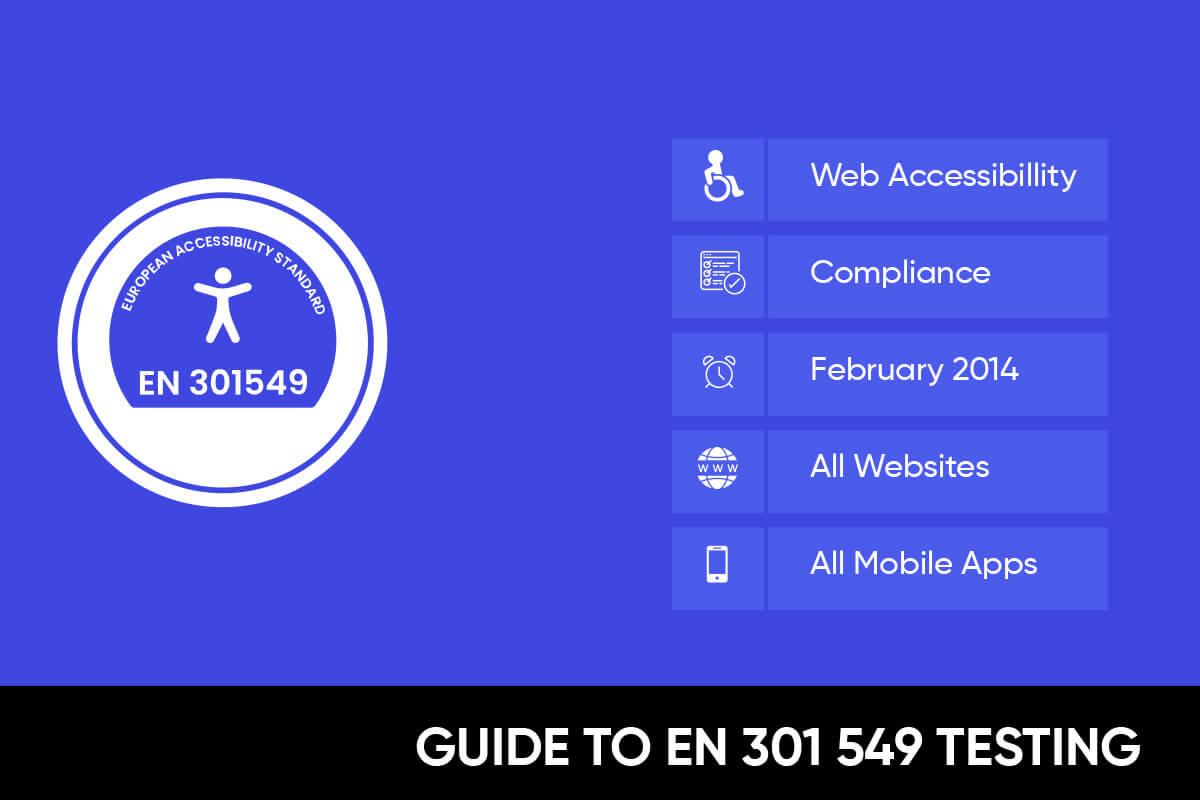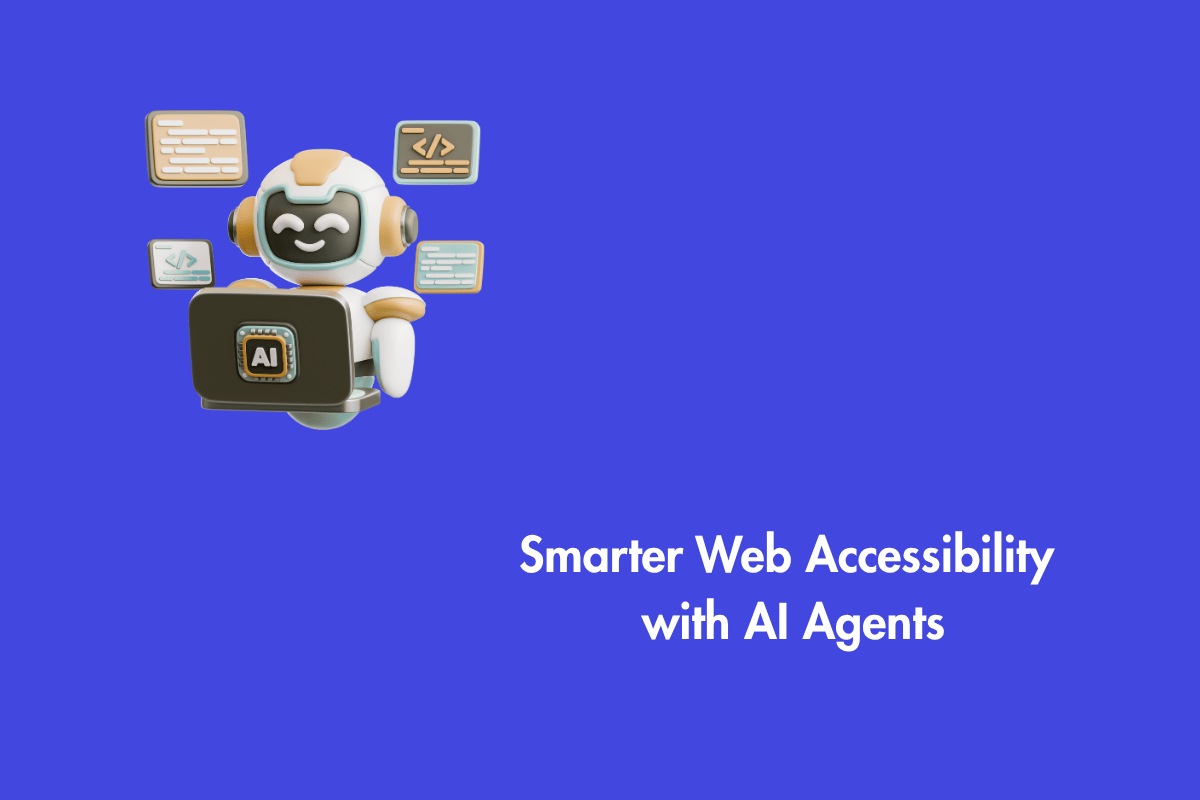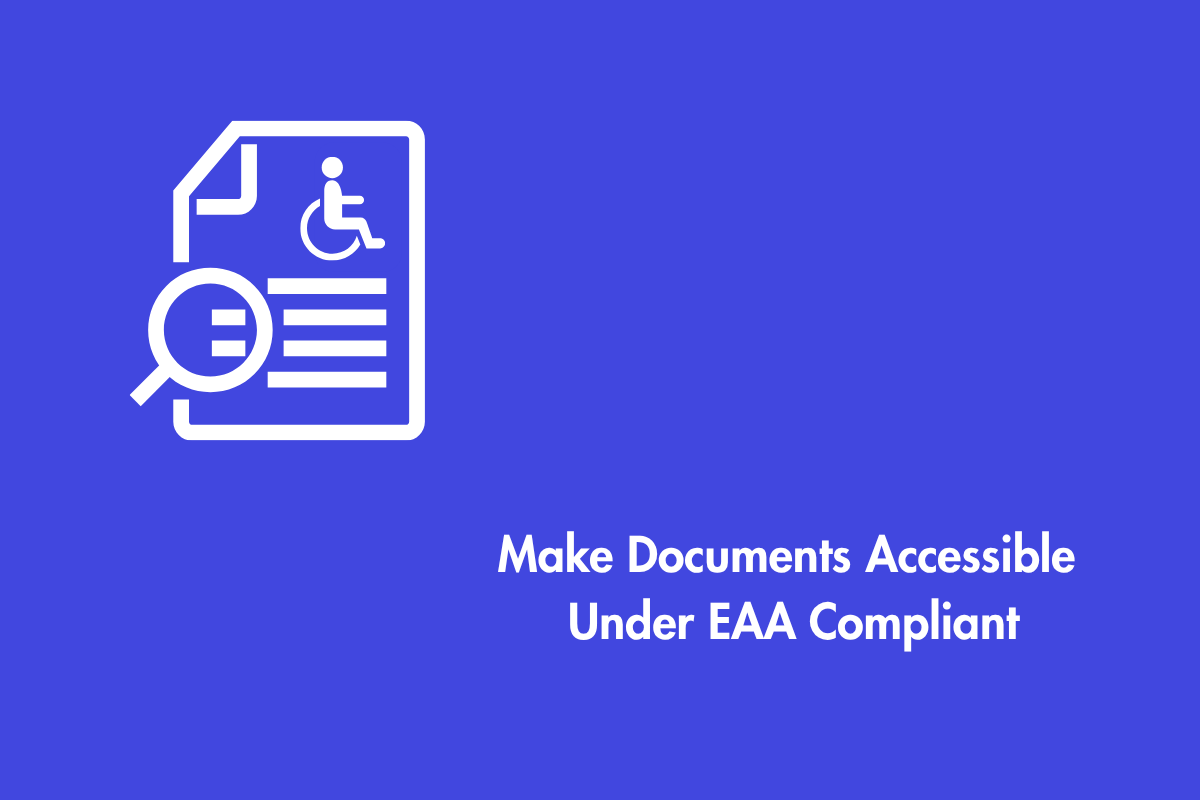In Europe, digital accessibility is a good thing to do and a legal duty. The European Union (EU) has made some laws and standards to ensure digital accessibility is followed and checked in all its member states. One of the most critical and complete standards is EN 301 549, which tells what accessibility needs to be met when buying ICT products and services in Europe.
This article will tell you everything you need to know about EN 301 549 Testing and how it works.
Table of Contents
What is EN 301 549 Testing?
EN 301 549 testing is a way of checking if ICT products and services meet the accessibility needs that are formulated in the EN 301 549 standard. It was made in 2014 by three European groups that postulate such mandatory specifications: CEN, CENELEC, and ETSI. It was updated in 2018 to match the Web Content Accessibility Guidelines (WCAG) 2.1, the most widely used guidelines for web accessibility worldwide.
This testing is for all ICT products and services bought by public sector groups in the EU, such as websites, mobile apps, software, hardware, electronic documents, and self-service machines. It is also for private sector groups that give ICT products and services to public sector groups or get public money.
EN 301 549 testing ensures that ICT products and services can be seen, used, understood, and worked well by all users, especially people with disabilities. It covers different parts of accessibility, like visual, auditory, cognitive, speech, physical, and biometric.
Why is it considered so Important?
EN 301 549 testing has many benefits for both ICT providers and users. Some of its advantages are:
- It aids ICT providers in evading legal risks and penalties for not following digital accessibility laws.
- ICT providers reach more customers and make them happy by making their products and services available to more people with different needs.
- It helps ICT providers improve their image and social responsibility by showing that they care about inclusion and equality.
- ICT users access information and services more efficiently and independently. It also makes them more involved and active in social, economic, cultural, and political activities.
What are the aspects covered by EN 301 549 Testing?
It covers a lot of ICT products and services used by public sector groups or given to them by private sector groups. The products and services that EN 301 549 testing covers are:
- Websites: Any web-based content or function shown through a web browser or app.
- Mobile apps: Any software app that runs on a mobile device or a tablet.
- Software: Any software product or service that runs on a desktop or a laptop.
- Hardware: Any physical device or machine that works with software or gives input or output functions.
- Electronic documents: Any document made or seen using software or hardware.
- Self-service machines: Any device or machine that gives self-service functions to users in public places.
Based on the guidelines and success criteria of WCAG 2.1, each of these goods and services has particular accessibility requirements. For instance,
- Websites must follow WCAG 2.1 Level AA requirements for web content accessibility.
- Mobile apps must follow WCAG 2.1 Level AA requirements for web content accessibility and more for mobile accessibility.
- The software has to follow WCAG 2.1 Level AA requirements for web content accessibility as well as those for software accessibility.
- Hardware has to follow WCAG 2.1 Level A needs for web content accessibility as well as hardware accessibility.
- Electronic documents have to follow WCAG 2.1 Level AA needs for web content accessibility as well as more specific needs for document accessibility.
- Self-service machines have to follow WCAG 2.1 Level AA needs for web content accessibility as well as more specific needs for machine accessibility.
How to Conduct EN 301 549 Testing?
The way to conduct EN 301 549 tests has some steps that can be summarized like this:
- Planning: This step involves deciding the scope, goals, needs, methods, tools, resources, and time of the project chosen for testing. It also involves discovering who is involved in the testing team and the client, their roles, duties, and expectations.
- Preparation: This step involves getting and checking the relevant documents and information about the ICT product or service to be tested. It also involves setting up the place and tools, such as browsers, screen readers, magnifiers, keyboards, etc.
- Execution: This involves testing activities according to the defined methods and needs. It may involve manual testing, automated testing, or both. It may also involve user testing, expert testing, or both. The testing activities should cover all the relevant accessibility needs and functional performance statements of EN 301 549 standards.
- Reporting: This step includes writing and telling the results of the testing activities. It may involve making a test report that describes the findings, problems, suggestions, and proof of the testing project. It may also include making a conformance claim that states the level and amount of conformance with EN 301 549 standards.
- Follow-up: This step involves giving help and advice to the client on how to fix the problems and follow the suggestions found in the test report. It may also include checking and confirming the fixing actions taken by the client.
What are the Typical Issues with EN 301 549 Testing?
EN 301 549 testing is a complex task to perform. It needs a lot of knowledge, skill, experience, and resources to do it well and quickly. Some of the common problems that may occur in this situation are:
- Complexity: The EN 301 549 standard is a complex and complete document that covers many parts of digital accessibility. It may take time to understand and follow all the needs and criteria for different ICT products and services simultaneously.
- Variability: It allows some flexibility and variability in how to meet accessibility needs and functional performance statements. Finding the best practices and solutions for different situations and cases may be challenging.
- Compatibility: The EN 301 549 standards are based on WCAG 2.1 guidelines for web content accessibility. However, not all ICT products and services are web-based or web-compatible. Changing or adding guidelines for non-web ICT products and services may take a lot of work.
- Availability: This standard needs testing with many tools and devices that support different ways of interaction and presentation. However, not all tools and devices are easy to get or cheap for testing. Obtaining or using all the tools and devices for testing may be expensive or impossible.
- Diversity: The EN 301 549 standard tries to meet the needs and choices of users with different abilities and disabilities. However, it is only possible to meet some of the users’ needs and preferences. It may take work to balance and prioritize the different needs and choices of different users.
Methods for Resolving Issues Permanently
EN 301 549 tests may find many problems that must be fixed to make ICT products and services accessible. Some of the ways to do it are:
- Implementing remediation strategies: This means making changes to the ICT products and services to fix the problems found in the testing. The changes may involve design, development, content, or configuration. The changes should follow the suggestions and best practices in the test report and the EN 301 549 standard.
- Ensuring ongoing compliance and maintenance: It means ensuring the ICT products and services stay accessible after fixing the problems. This process may involve regular testing, monitoring, updating, and training. This step should follow the guidelines and tools given in the EN 301 549 standard and the conformance claim.
Final Remarks
EN 301 549 testing is essential for digital accessibility in Europe. It makes ICT products and services usable by everyone and follows EU laws and standards. It is a complex and challenging task that requires knowledge, skill, experience, and resources. It covers different ICT products and services, with additional accessibility requirements and criteria. It also meets the diverse needs and preferences of other users. It can be done by following a systematic process, overcoming common challenges, implementing remediation strategies, and ensuring ongoing compliance and maintenance.
We hope this article has helped you understand EN 301 549 tests. At AEL Data, we have a team of specialists who carefully audit each web page to identify accessibility issues and remediate them. We also offer post-project transition support plans to ease your team into tackling issues when you go live. Click here to schedule your free call today!



